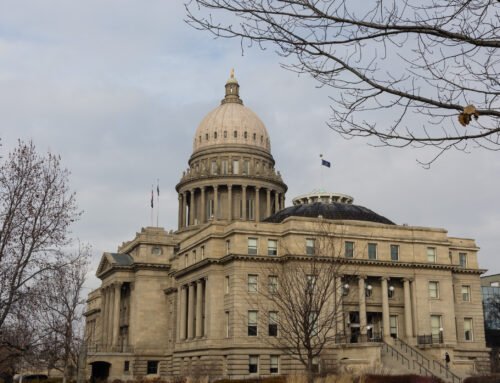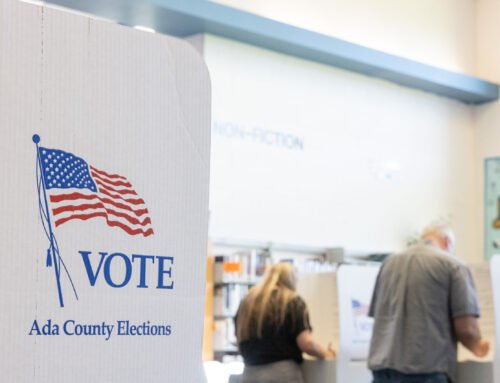The Treasure Valley claims more schools — whether traditional, magnet, or charter — with top reading scores than anywhere else in the state, according to results from the fall Idaho Reading Indicator.
The results, released last week, showed a slight improvement statewide, with 58% of Idaho students reading at grade level, as opposed to 57% last fall. But some individual schools and districts far exceed the state average — Boise’s Longfellow Elementary, for example, had nearly 92% of students reading at grade level.
Standardized tests in Idaho make quite the alphabet soup: There’s ISAT, IRI, AP, SAT, PSAT, and NAEP exams. Check out our explanatory guide to make sense of it all.
EdNews compiled Top 10 Lists to showcase the state’s top performers on the exam, taken by about 90,000 Idaho students in grades K-3, and they were often stacked with schools from the state’s most urban area.
In this case, student achievement seems to correlate more with school location than school type.
West Ada leaders recently acknowledged that large, urban districts like theirs do have certain advantages — like a large staff, more resources, and a greater tax base.
To see if your school was a top performer, check out our lists below.
First consider some caveats
We’ve grouped the highest performers into the following categories:
- traditional schools
- charter, magnet, and nontraditional schools
- traditional districts
- nontraditional local education agencies
There’s also a ranking of the 10 largest traditional districts.
Before you look through the lists, keep a few things in mind:
- These lists don’t account for enrollment differences (with the exception of the large district ranking). In smaller schools and districts, it can be easier to achieve high proficiency rates than in large schools/districts because data more easily skews high or low based on the performance of a relative few.
- The lists also don’t account for demographic differences, such as a student body’s affluence, English proficiency, or other such factors that can affect a school’s test results.
- Some data has been redacted by the state, so not all districts and schools are represented.
- While we strive to compare the most similar types of schools and districts, there are still a number of differences that aren’t accounted for (like those mentioned above and others). No comparison can be completely fair because of that.
- For complete datasets, click on the links at the bottom of the article.
Top performers: Traditional schools
Treasure Valley schools permeate this list. Only one school from outside the area, tiny Parker-Egin Elementary (with an enrollment of 89), joined them.
There was a higher bar for entry (80.4%) for this list than for the nontraditional schools list (where it was 77.1%).
| School (District) | % of students reading at grade level |
| Longfellow Elementary (Boise) | 91.7 |
| Adams Elementary (Boise) | 87.6 |
| Collister Elementary (Boise) | 87.4 |
| Paramount Elementary (West Ada) | 87.4 |
| Trail Wind Elementary (Boise) | 85.8 |
| Washington Elementary (Boise) | 83.6 |
| Riverside Elementary (Boise) | 83.2 |
| Highlands Elementary (Boise) | 82.4 |
| Eagle Hills Elementary (West Ada) | 81.7 |
| Parker-Egin Elementary (Fremont) | 80.4 |
Top performers: Charter, magnet and nontraditional schools
Treasure Valley schools again pervade this list, with just three schools located elsewhere. This list is similar to the nontraditional LEAs list, except that it includes three magnet schools (which are part of traditional districts).
For an explainer on types of schools, check out our Spelling it Out.
| School (Location) | % of students reading at grade level |
| Compass Public Charter (Meridian) | 85.5 |
| Victory Charter (Nampa) | 83.9 |
| North Star Charter (Eagle) | 83.9 |
| Pioneer of the Arts (Boise) | 83.6 |
| North Idaho STEM Charter Academy (Rathdrum) | 82.7 |
| Sorensen Magnet (Coeur d’Alene) | 81.6 |
| Galileo Magnet (Eagle) | 80.4 |
| Upper Carmen Public Charter (Carmen) | 80.4 |
| Rolling Hills Public Charter (Boise) | 78.6 |
| Sage International (Boise) | 77.3 |
Top performers: Traditional districts
Most of the districts on this list are small and rural. Troy, a tiny district that frequents these lists, came out on top.
It’s the only list with high geographic diversity; Treasure Valley schools or educational institutions inundate the rest. That could be because smaller districts have the advantage of small student bodies, and scores that can easily skew high or low.
The barrier of entry for this list (68%) is much lower than the barrier of entry (75%) for the non-traditional local education agencies list.
| District | % of students reading at grade level |
| Troy | 73.5 |
| North Gem | 72.7 |
| Grace | 72.1 |
| Kamiah | 71.1 |
| Midvale | 69.4 |
| West Ada | 68.8 |
| Dietrich | 68.6 |
| Melba | 68.4 |
| Swan Valley Elementary | 68.2 |
| McCall-Donnelly | 68 |
Top performers: Nontraditional local education agencies
Treasure Valley charter schools dominate this list, claiming 8 of 11 spots.
| LEA | % of students reading at grade level |
| Compass Public Charter (Meridian) | 85.5 |
| Victory Charter (Nampa) | 83.9 |
| North Star Charter (Eagle) | 83.9 |
| North Idaho STEM Charter Academy (Rathdrum) | 82.7 |
| Upper Carmen Public Charter (Carmen) | 80.4 |
| Rolling Hills Public Charter (Boise) | 78.6 |
| The Sage International School (Boise) | 77.3 |
| Falcon Ridge Public Charter (Kuna) | 77.1 |
| Gem Prep: Meridian South | 76.1 |
| Liberty Charter (Nampa) | 75 |
| Taylor’s Crossing Public Charter (Idaho Falls) | 75 |
Largest traditional districts, ranked
There was a gap of about 19 percentage points between the highest-performing large district (West Ada, with about 69% of students reading at grade level) and the lowest-performing (Twin Falls, with only about half of students reading at grade level).
| District | % reading at grade level |
| West Ada | 68.8 |
| Boise | 65.3 |
| Coeur d’Alene | 63.6 |
| Bonneville | 60.3 |
| Pocatello | 59.9 |
| Vallivue | 58.5 |
| Oneida | 57.1 |
| Idaho Falls | 52.1 |
| Nampa | 50.4 |
| Twin Falls | 49.4 |
Full datasets are also available for those interested: IRI scores by school; IRI scores by district.
Further reading on spring IRI results:
Idaho Education News data analyst Randy Schrader contributed to this report.






Leave A Comment